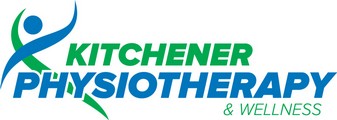Q: I need some answers quickly. I tore my Achilles tendon playing tennis yesterday. Went to the emergency department. They put me in an air-cast until I can see an orthopedic surgeon. That's tomorrow. I absolutely can't function with a cast that won't allow weight-bearing. Will I be able to talk the surgeon into a walking cast?
A: Research continues in the area of treatment for Achilles tendon ruptures. The last 10 years has brought a change from placing patients in a nonweight-bearing cast to using an ankle-foot orthosis (AFO) instead. An AFO is a brace usually made from plastic or light metal (carbon fiber). It allows for early weight-bearing.
The Achilles tendon is a strong, fibrous band that connects the calf muscle to the heel. The calf is actually formed by two muscles, the underlying soleus and the thick outer gastrocnemius. Together, they form the gastroc-soleus muscle group. When they contract, they pull on the Achilles tendon. This action causes your foot to point down and helps you rise up on your toes. This powerful muscle group helps when you sprint, jump, or climb. Several different problems can occur that affect the Achilles tendon, some rather minor and some quite severe.
In severe cases, the force of a violent strain can rupture the tendon. The classic example is a middle-aged tennis player or weekend warrior who places too much stress on the tendon and experiences a tearing of the tendon. In some instances, the rupture may be preceded by a period of tendonitis, which renders the tendon weaker than normal.
Traditionally, this type of injury required a long period of time for healing, recovery, and rehab. Management with early weight-bearing is helping change that. The question now is what's the best AFO design for this problem? We don't know yet but studies are ongoing looking for some answers. Here's what a recent study from England has revealed.
Using 15 normal, healthy adults, the researchers compared three different AFOs with four different heel-wedge combinations. That gives a total of 12 different possible combinations. The heel wedge is used to place the ankle in a position of plantar flexion (toe pointed) in order to take stretch and pressure off the Achilles tendon while it is healing.
The goal is to find the position that protects the healing Achilles while still allowing function in order to avoid atrophy (wasting) of the gastroc-soleus muscle group. The benefit is to restore motion and strength faster and therefore allow the patient to return to daily (and sports) activities sooner with less disability.
They found that with smaller wedges, more dorsiflexion (toe pulled up toward face) was allowed and more pressure was placed on the forefoot/less pressure on the heel. The more rigid AFO used in the study (a rigid rocker-bottom design) resulted in less pressure on the heel and more pressure on the forefoot.
In fact, the greatest heel pressures were measured when subjects wore the rigid rocker-bottom AFO. When this AFO was combined with the thickest wedge, there was more motion restriction than any other AFO/wedge combination.
This makes sense because the amount of load placed on the Achilles tendon, heel, and forefoot depends on motion at the ankle. When more dorsiflexion is allowed, force is transferred from the heel to the forefoot. Less dorsiflexion means less transfer of force from the heel to the forefoot so there is less pressure on the forefoot and more on the heel.
How does this all translate to someone who has a ruptured Achilles tendon? Reducing ground-reaction forces and the degree of loading by using an ankle-foot orthosis with wedging is an important rehab strategy. Weight-bearing is allowed but in a protected mode. The foot and ankle are held in a plantarflexed position so the Achilles tendon can heal properly. If the ankle is dorsiflexed, the Achilles tendon is lengthened. Healing of the tendon in a lengthened position results in severe problems later.
All the details of type of brace and amount of ankle plantarflexion/dorsiflexion are not fully answered yet. But you should be able to work with an orthopedic surgeon, orthotist, and physiotherapist to find the optimal rehab management program that will protect the healing tendon while accomodating your individual needs. Whatever your circumstances, you don't want to compromise healing of this important tendon as it can have lifelong consequences.
Reference: Rebecca S. Kearney, MSc, et al. In-Shoe Plantar Pressures Within Ankle-Foot Orthoses. In The American Journal of Sports Medicine. December 2011. Vol. 39. No. 12. Pp. 2679-2685.
WE OFFER DIRECT BILLING TO
MOST INSURANCE COMPANIES
MOST INSURANCE COMPANIES
Physiotherapy - Massage Therapy - Shockwave








